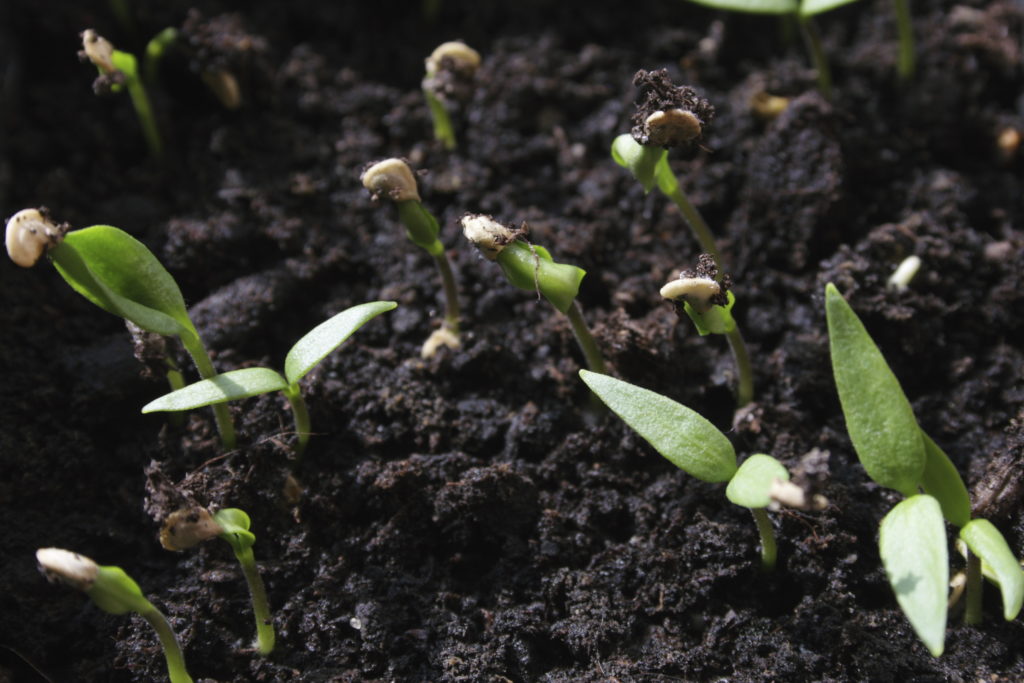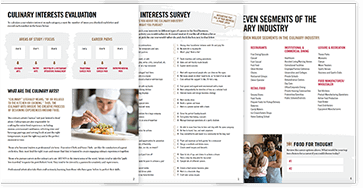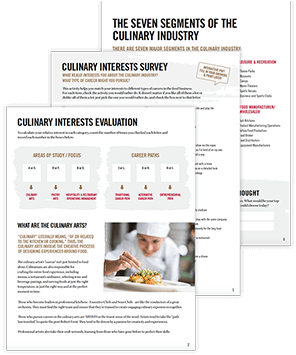Up to 40% of the food produced in the U.S. is thrown away each year. That’s 80 billion pounds of food!
This is a devastating number when you consider the number of people going hungry each day. But it’s also a major environmental problem. Food waste makes up 22% of municipal solid waste in landfills. And the methane produced by organic matter decomposing under landfill conditions is a major contributor to global warming.
While some of the responsibility for this volume lies with the consumer, restaurants and grocery stores are also part of the problem.
Here are four ways chefs can reduce food waste so they can be part of the solution.
Establish a Culture of Waste Prevention
A chef can have the best intentions when it comes to reducing food waste. But he or she is only one person in a kitchen of a dozen or more employees. Unless the whole team is on board, waste prevention efforts will fall flat.
Managing food waste needs to be a priority worked into the kitchen’s daily operations. Add a food waste log into your restaurant’s Standard Operating Procedures (SOPs). Make sure it’s easy to update in-the-moment, or cooks will forget to use it.
It should track exactly what was discarded, and why — for example, if the item was dropped on the floor, or if it had simply spoiled. Look for patterns. If there is more waste when certain people are working, maybe they need better training.
“One of the most important lessons I learned along the way was how to reduce waste in the creation of food – to make sure all the food ingredients are portable and can be used on more than one dish.”
Quyen Trinh, Escoffier Culinary Arts Graduate & Owner of Anise-Modern Vietnamese Eatery
Get the team on board. They need to understand why waste prevention is important for both the restaurant and the overall environment. And make sure new hires are up to speed by adding the waste reduction policies to your training materials.
It’s also important to keep a close eye on your inventory. Are you over-ordering? This is one area where education can really help. Degrees and diplomas from Auguste Escoffier School of Culinary Arts could include coursework in purchasing and inventory. This foundation may help chefs to manage costs and reduce waste.
Incentivize the team to reach certain reduction milestones. Maybe start a little friendly competition with another restaurant nearby? As your waste log begins to improve, share your wins with the team.
Reconsider Portion Sizes
American plates tend to be overloaded with food. Are you serving more in a single meal than anyone could possibly eat?
Ask the servers for their input. Which dishes are consistently brought back half-full, only to be scraped into the garbage? What entrees are most often taken home in a to-go box?
If your customers expect massive portions from your restaurant, you don’t want to cut them drastically. But if half of that side dish is getting thrown away consistently, can you reduce it by 10 to 20%?
Even the presentation method can contribute to food waste. Large ramekins get filled to the brim with sides of gravy or BBQ sauce, but does the guest actually need that much?
One restaurant used a squat jar to serve a side dish of warm potato salad, but its bulbous shape meant guests couldn’t reach the edges with their forks. The result was that a lot of potato salad went straight into the trash. By changing that jar for a different vessel, the kitchen reduced the portion size and provided a better dining experience for the guest.
Make Everything Do Double Duty
To truly minimize waste, we may have to reconsider what “waste” is. Small scraps may not amount to much on their own, but they can be brought together to make something new.
Gather veggie and bone scraps to make homemade stock. Stock freezes well, so you can make a batch whenever you have the ingredients and save it for future use. Carrot and celery tops, parsley and mushroom stems, seafood shells — these bits are all great for adding flavor to stocks.
What else can we repurpose? Stale bread can be used for bread pudding or a panzanella salad. Citrus peels can be candied or handed over to the bar for garnishes. Leftover fat from trimmed cuts of meat can be rendered into lard or tallow and used for future cooking.
It does take some work, and it takes some planning. The whole kitchen will need to know what to save, and where to put it so it isn’t accidentally discarded. But you’ll be able to keep many pounds of food out of a landfill and save money.
Compost
If your goal is to minimize the amount of food that isn’t consumed, then composting alone isn’t a solution. But as part of a larger strategy that focuses on diverting food from the landfill, it is a good final step.
Compost is made from organic material that breaks down into a nutrient-rich fertilizer. It is added to garden beds to enrich soil and encourage the growth of healthier produce.

Adding a small compost bucket to prep and cook stations will provide an easy way for employees to separate compostable scraps. But they will have to be trained on what is and is not suitable for compost.
And as part of that waste prevention culture, employees must know that composting is a last resort — not a way to foist the issue of food waste onto someone else.
It’s also important to consider your composting service. If the compost collector has to drive miles away, the carbon emissions may offset the amount of waste that is composted.
In that case, can you start your own in-house composting program? While this isn’t an option for all restaurants, it may be a worthwhile activity for some — especially farm-to-table restaurants that grow their own fruits, veggies, and herbs.
At Escoffier, Culinary Arts students get the Farm to Table® Experience as part of their curriculum. During this course, they get to learn about where our food comes from and the benefits of buying local. Many students carry these lessons with them as they continue to work in the industry.
“I chose to attend Escoffier primarily because of the Farm to Table® program. I believe in the importance of sustainability and ethical sourcing and wanted to grow more familiar with the farm-to-table philosophy.”
Suzanne Armstrong, Boulder Culinary Arts Graduate
What About Donations?
There is a common misconception that restaurants can’t donate food because of liability. They’re afraid that if someone got sick from improperly stored donations, the restaurant would face a lawsuit.
But the 1996 Bill Emerson Good Samaritan Food Donation Act protects restaurants from liability when they donate food to non-profits. If you want to start donating food, contact your restaurant’s lawyer to discuss your options.
The bigger obstacle to food donations is logistics. Finding a cost-effective way to get food into the hands of the needy can be a challenge. If you want to donate food, reach out to food banks and non-profits in your area to discuss possibilities.
And remember — donated food can be a tax deduction for the restaurant.
The Essential Culinary Career Survey
The Essential Culinary Career Survey
What's your ideal culinary career: Fine dining? Your own restaurant? Pastry? Get our self-evaluation survey to find out!

We’ve compiled a checklist of all of the essential questions into one handy guide: career options, culinary interest surveys, educational opportunities, and more.


Start with Education
Reducing food waste comes down to systems and communication. Once you have systems in place to save what you can, compost, manage inventory, and (possibly) make donations, you’ll be doing your part to reduce food waste in your kitchen.
That’s better for your restaurant and better for the environment.
There’s so much to explore about inventory management, portion sizing, recipe development, and the farm-to-table ecosystem. Our Plant-Based Culinary Arts degree and diploma programs are a great place to start. Get started by contacting Admissions at Auguste Escoffier School of Culinary Arts!
Did you find that article helpful? Try these next:
- 3 Tips for Becoming an Environmentally Conscious Chef
- Farmer Lee Jones of ‘The Chef’s Garden’ Discusses Sustainable Farming with Escoffier Students and Faculty
- The Fine Art of Building a Seasonal Menu
This article was originally published on April 28, 2016 and has since been updated.

 “One of the most important lessons I learned along the way was how to reduce waste in the creation of food – to make sure all the food ingredients are portable and can be used on more than one dish.”
“One of the most important lessons I learned along the way was how to reduce waste in the creation of food – to make sure all the food ingredients are portable and can be used on more than one dish.” “I chose to attend Escoffier primarily because of the Farm to Table® program. I believe in the importance of sustainability and ethical sourcing and wanted to grow more familiar with the farm-to-table philosophy.”
“I chose to attend Escoffier primarily because of the Farm to Table® program. I believe in the importance of sustainability and ethical sourcing and wanted to grow more familiar with the farm-to-table philosophy.”

